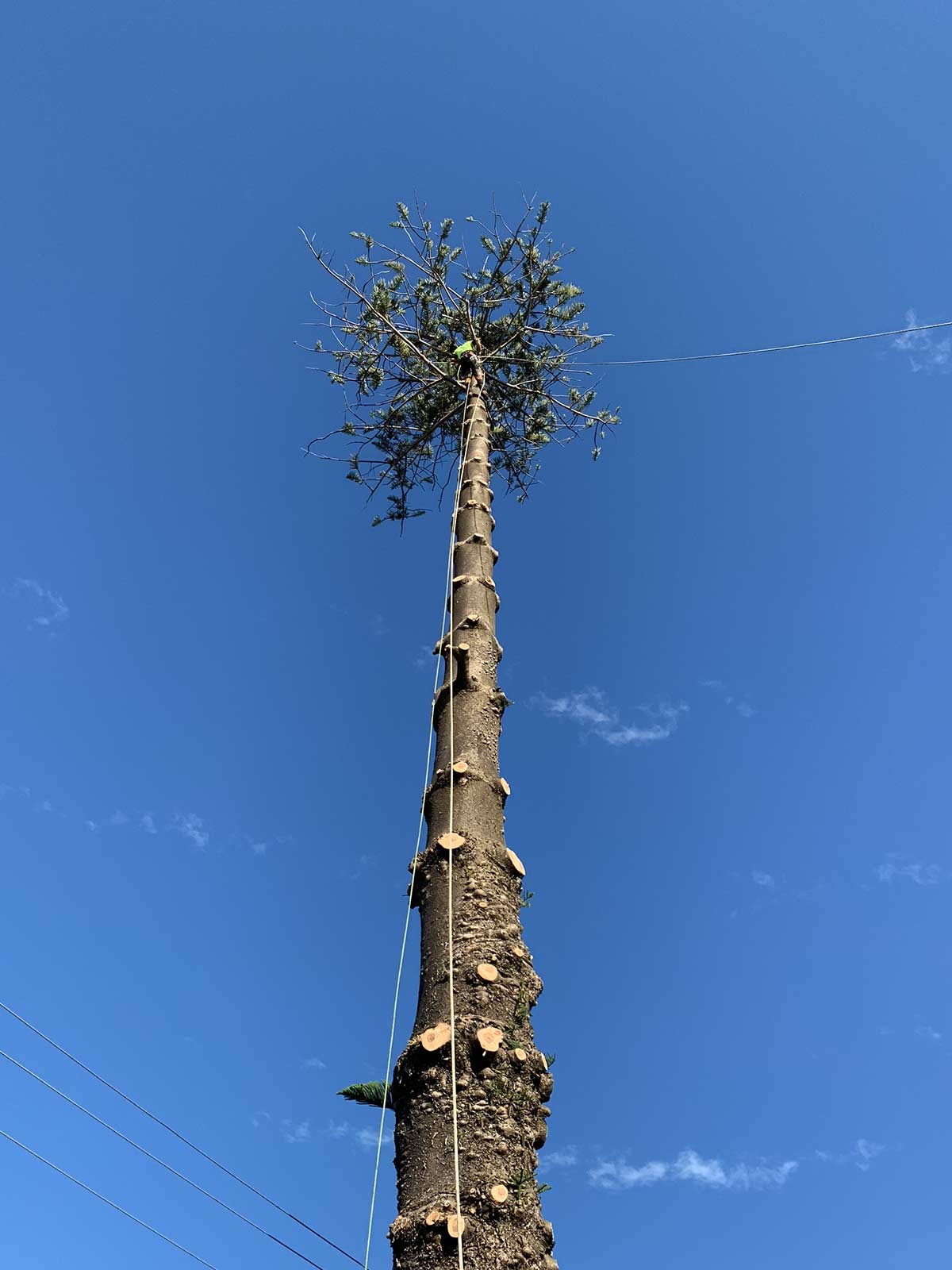DO YOU REQUIRE EMERGENCY TREE REMOVAL?
24 hour Storm DAmage response
Emergency Tree Removal Services

Fallen Tree WA - Image credit: Sarah Pond,
Require Emergency Tree Removal Services? While storms happen throughout the year, in the Perth South Metro and Peel Region of WA they occur most frequently between May and October each year.
Severe storms in WA are often extremely dangerous.
Falling trees and snapped branches damage homes, vehicles and infrastructure. People may suffer injury or death directly from tree hazards, or indirectly through damaged infrastructure caused by fallen branches and trees.
At Jordans Tree Services, we have an experienced and trained team of tree removal professionals equipped and ready to respond to emergency tree hazard calls as quickly and safely as possible in the Perth South Metro and Peel Region. We minimise potential further damage to property by assessing risk and removing the tree/branches.
Depending on tree type, size and proximity to other hazards, a variety of specific tree removal techniques, personal protective gear and equipment may be required to effectively remove and stabilise the tree hazard. This may include cranes and other high-powered tech which requires experience and expertise to use.
Large fallen trees can become a dangerous task to remove and are best left to a professional tree removal team. Do not attempt to remove major tree hazards from storm/natural disaster damage - you are putting yourself, your property and others at risk.
Our professional team responds to residential and commercial emergency tree removal service requests quickly. Safety is paramount in everything we do at Jordans Tree services - Safe Tree Removal Procedures and Processes are enacted in every step.

Emergency Tree Removal
WHY Choose a Professional tree removal team?
Professional Tree Removal is what we do at Jordans Tree Services - we remove many trees and stumps each year, managing risks through various measures to protect ourselves from potential injury. Yet we still risk injury - even after taking all the necessary safety steps to protect ourselves and our colleagues.
Tree Removal is a dangerous job. Plain and simple. Contacting a professional team is a safe and responsible decision for you and those around you.

Tree Removal is dangerous work best left to professionals
Tree removal tools are highly dangerous. It only takes a slight mistake or a split-second for a hand or power tool to cause serious injury to arms and legs - *whether a chainsaw, hand saw or wood chipper*. Our team of experienced professionals uses these tools on a day-to-day basis, while wearing personal protective equipment, and yet we still get hurt. An inexperienced person attempting to use these tools for tree removal poses a significant danger to themselves and others.
Any given trees strength, structure and location pose unique dangers. Firstly, lacking the correct equipment or equipment that meets safety standards can lead to falls with serious injuries. Secondly, branch placement, strength and flexibility of the tree make it crucial to select the right branch to anchor onto during the process. Careful manoeuvring in the tree is extremely important. Failure to assess structural integrity can lead to branch breaks and falls. A third major consideration is the trees proximity to powerlines - if working in a tree located close to a power line, a touch of equipment or an elbow brushing the line may result in electrocution and a hospital visit.
Careful assessment of the tree and surrounding area before any attempts are made to remove it reveal potential hidden dangers. Knowledge of WA's local poisonous plants and insects is crucial when scaling the tree during the removal process; specialised heavy-duty protective equipment and gloves provide protection from seemingly innocuous critters and pretty plants. Toxic chemical residues from powerlines can leach onto trees and put people at serious risk of harm. Identifying and effectively managing risks, especially those particular to local areas, is paramount to safe and effective tree removal.
Decaying trees have hollowed-out trunks which grow structurally weaker over time; they are increasingly dangerous. Many types of rot and decay affect trees differently with differing severity, and some aren't noticeable until the chopped tree isn't falling where it should (there goes the house...). Rotting and diseased trees are highly unstable, unpredictable and more likely to collapse compared to healthy trees - both during removal and in turbulent weather. Given the increased risk of personal injury and property damage, cranes are sometimes used to remove deadwood. If signs of tree rot are spotted, don't delay seeking professional tree removal.
Even healthy trees often don't fall where anticipated, so calculated measures are taken to direct the fall away from buildings, powerlines and people to minimise danger and damage. The process entails clearing space, calculating fall direction, cutting angled indentions at appropriate locations, attaching cords on structurally stable branches, wind checks and estimating fall distances. This is achieved with sound equipment, experience, expertise and a thorough inspection of the tree and surrounding area. Attempting to fell a tree without these assets may wind up creating more problems than it should have solved.

